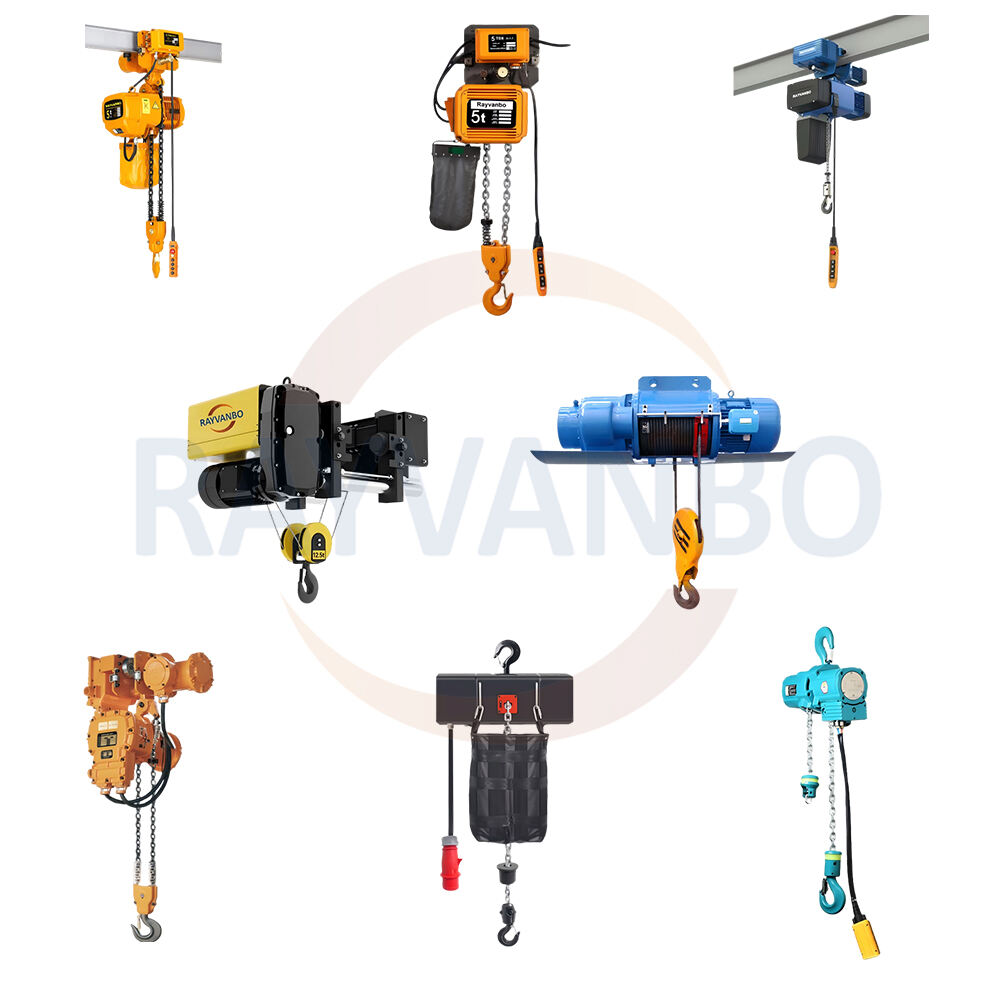In the vast market of electric hoists, how do you accurately select the most suitable machine for your working conditions? The answer lies in understanding a few core parameters on the product nameplate and specification sheet. Understanding the following 5 key parameters will help you choose the hoist that best suits your needs.

1. Lifting Capacity (Ton)
This is the most basic and crucial parameter, directly determining the lifting capacity of the electric hoist.You must clearly define the maximum weight of goods you can lift daily. Never use a hoist with a smaller capacity for a larger load! The selected rated lifting capacity must be greater than or equal to the maximum weight of the goods, and it is recommended to retain a 10%-20% safety margin. For example, for a maximum lifting capacity of 0.9 tons, you should choose at least a 1-ton hoist, and 1.5 tons would be even safer. At the same time, ensure that the hook, wire rope/chain, and other accessories are also compatible with the lifting capacity.
2. Lifting Height (m)
This refers to the maximum vertical distance from the lower limit position of the hook to the upper limit position.
Accurately measure the maximum lifting height required on site. For example, the height from the ground to the overhead crane beam, or the maximum height from inside the machine tool to after removal. The selected lifting height must be greater than this actual requirement; otherwise, the lifting task will be impossible to complete, and it may even cause a safety accident.
3. Working Duty
This represents the "durability" and "working intensity" of the electric hoist, usually expressed as M3 (light-duty), M4 (medium-duty), M5 (heavy-duty), etc. M3 (light-duty): Suitable for occasional, intermittent use, such as in repair shops and laboratories. M4 (medium-duty): Suitable for factories, warehouses, assembly lines, and other occasions with moderate usage frequency.M5 (heavy-duty): Suitable for harsh environments with high intensity and frequent use, such as in metallurgy and docks. The selection principle is "choose the higher one." A heavy-duty hoist used in light-duty conditions will have a longer lifespan; conversely, a light-duty hoist used in heavy-duty conditions will be damaged quickly.
4. Operating Speed (m/min)
Mainly includes lifting speed and traveling speed. A balance between efficiency and accuracy is needed. For precision assembly, equipment installation, and other applications requiring precise positioning, low-speed or dual-speed hoists should be selected for smoother operation. For warehouses, logistics, and other applications prioritizing handling efficiency, standard or high-speed hoists are a better choice. If used in explosion-proof environments, a low-speed model must be selected to reduce the risk of friction sparks.
5. Protection Rating (IP)
The IP protection rating consists of two numbers, representing protection against solid foreign objects and water, such as IP54. IP44: Suitable for general indoor workshop environments, protecting against solid foreign objects larger than 1mm and splashes of water from all directions. IP54: Dust and splash resistant, standard for most industrial environments. IP65/IP67: Completely dustproof and can withstand strong water jets or brief immersion, suitable for dusty, humid, or corrosive environments such as foundry, chemical, and outdoor environments.
By mastering these five core parameters—lifting capacity, lifting height, working class, operating speed, and protection rating—you'll no longer be overwhelmed when choosing an electric hoist. By matching them to your actual working conditions, you can accurately select the right hoist that perfectly meets your needs, ensures operational safety, and maximizes efficiency.
 Hot News
Hot News2025-11-14
2025-11-14
2025-11-07
2025-11-07
2025-10-31
2025-10-31